Mar 17, 2017
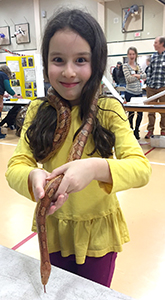 On February 15th, BAL’s Project Manager Amanda Royal organized over 70 exhibitors for the annual Science Discovery Night at Lake Forest Park Elementary. Over 300 kids with their families attended this fantastic event to explore the wonderful world of science and to learn from exhibitors ranging from the Seattle Audubon Society to the UW Dept. of Earth and Space Sciences. With additional help from BAL’s Tiffany Stilwater and Anna Prestbo, the event received an A+ from exhibitors and families alike, sending our future generation home with the scientific tools to help them tackle the world.
On February 15th, BAL’s Project Manager Amanda Royal organized over 70 exhibitors for the annual Science Discovery Night at Lake Forest Park Elementary. Over 300 kids with their families attended this fantastic event to explore the wonderful world of science and to learn from exhibitors ranging from the Seattle Audubon Society to the UW Dept. of Earth and Space Sciences. With additional help from BAL’s Tiffany Stilwater and Anna Prestbo, the event received an A+ from exhibitors and families alike, sending our future generation home with the scientific tools to help them tackle the world.
Feb 16, 2017
 Brooks Applied Labs recently unveiled a new method for the quantitation of selenium in saline waters at concentrations of 5 ng/L (that converts to 0.005 µg/L!). This new capacity to support ultra-trace detection limits for elements predominately existing as anions in saline waters (such as seawater, brackish waters, and brines) will allow our clients and the scientific community to definitively support discharge requirements and investigations for estuaries, bays, near shore and open ocean, and saline lakes. Historically, these detection limits could only be achieved by using complicated and laborious preparatory methods that have a high degree of uncertainty and rely heavily upon reaction chemistry. With this new capability to support both low-level anionic and cationic metal analyses in some of the most difficult aquatic matrices, Brooks Applied Labs is setting what is expected to be the new gold standard for analytical laboratories around the world.
Brooks Applied Labs recently unveiled a new method for the quantitation of selenium in saline waters at concentrations of 5 ng/L (that converts to 0.005 µg/L!). This new capacity to support ultra-trace detection limits for elements predominately existing as anions in saline waters (such as seawater, brackish waters, and brines) will allow our clients and the scientific community to definitively support discharge requirements and investigations for estuaries, bays, near shore and open ocean, and saline lakes. Historically, these detection limits could only be achieved by using complicated and laborious preparatory methods that have a high degree of uncertainty and rely heavily upon reaction chemistry. With this new capability to support both low-level anionic and cationic metal analyses in some of the most difficult aquatic matrices, Brooks Applied Labs is setting what is expected to be the new gold standard for analytical laboratories around the world.
Methods for the analysis ultra-trace level metals in waters with high total dissolved solids (TDS) have traditionally been segregated into two groups: those applicable to elements that are present as cations or anions in solution. Preparatory methods designed to separate the target metals from alkali earth elements (Na, K, Mg, and Ca) and their conjunctive halogen anions (chloride, bromide, sulfate) often use precipitation techniques which involve reaction chemistry. As with any chemical reaction there are constants associated the reaction efficiencies and equilibriums. Those constants can change, depending on the complexity of the sample matrix and chemical reaction, which necessitate the use of assumptions. The evolution of technology has yielded methods which use automated in-line pre-concentration techniques (column chelation) for cationic transition metals but failed to support metals present as anions, until now.
Independent research at Brooks Applied Labs has produced an automated in-line pre-concentration method which separates the anionic metals from interfering salts. The method has undergone validation confirming the support for all prevalent molecular forms of selenium in natural aquatic systems to eliminate assumptions regarding method performance. The inherent benefits to automated in-line pre-concentration techniques equates to fewer re-analyses, fewer assumptions, superior accuracy and precision, all at a reduced cost compared to bench scale preparation techniques.
The new analytical method Brooks Applied Labs is offering is another testament to our devotion to science, our level of understanding about how our results are applied, as well as our desire to meet the data objectives of our clients. Contact us today to identify how partnering with Brooks Applied Labs can help you meet your current and future analytical needs for regulatory compliance, ecological modeling, and other investigations associated with selenium.
Feb 16, 2017
Brooks Applied Labs is Headed Overseas!
 Dr. Hakan Gürleyük
Dr. Hakan Gürleyük, Technical Director at BAL, and
Tamas Ugrai, Research Chemist, will both be presenting at the
European Winter Conference on Plasma Spectrochemistry, taking place February 19 – 24 in the Austrian ski resort town of Sankt Anton am Arlberg. The Winter Conference is the premier international conference for scientists working with plasma ion sources for atomic analysis, such as ICP-MS. Hakan will be speaking on the
Determination of radium in natural waters using IC-ICP-MS after on-line preconcentration, and Tamas will be presenting on
Reducing the risk of inaccurate results when quantifying trace elements in seawater using ICP-QQQ-MS. BAL is committed to supporting the research and development of new analytical methods and improved techniques supporting elemental analysis. If you are interested in receiving a copy of either of these presentations, please feel free to
contact us after February 24
th.
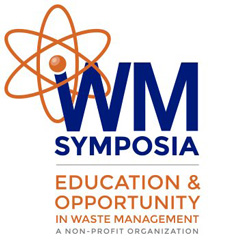 In contrast to the snowy slopes of Austria, Jamie Fox, BAL Technical Sales Manager, will be attending the Waste Management Symposium (WM2017) under the sunny skies of Phoenix March 5 – 9. This annual symposium is the world’s largest and most prestigious conference on radioactive waste management and DOE site remediation. You can find BAL’s radioactive materials license here, which allows us to accept samples with low-levels of radioactivity (or diluted samples from higher level sites). Contact us if you will be attending WM2017 and would like to meet with Jamie to discuss BAL’s capabilities serving this market!
In contrast to the snowy slopes of Austria, Jamie Fox, BAL Technical Sales Manager, will be attending the Waste Management Symposium (WM2017) under the sunny skies of Phoenix March 5 – 9. This annual symposium is the world’s largest and most prestigious conference on radioactive waste management and DOE site remediation. You can find BAL’s radioactive materials license here, which allows us to accept samples with low-levels of radioactivity (or diluted samples from higher level sites). Contact us if you will be attending WM2017 and would like to meet with Jamie to discuss BAL’s capabilities serving this market!
Jan 12, 2017
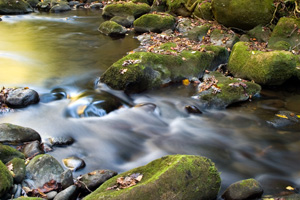 Ecotoxicity models for selenium have historically used total selenium concentrations to determine the risk to the ecosystem. However, more and more regulatory agencies are gaining an understanding of how the molecular form of selenium can impact the environment. Different molecular forms of selenium (species) will bioaccumulate (increase in tissue concentration) at different rates in lower trophic organisms, affecting the food chain at the basest level. Certain organic selenium species, such as selenomethionine, can bioaccumulate at a rate much faster than inorganic selenium species, such as selenite and selenate. To support the scientific demands of ecotoxicity models and investigations, Brooks Applied Labs has developed a new method for supporting selenium speciation analyses with a detection limit of 0.005 µg/L, which reflects applied dilutions for water samples.
Ecotoxicity models for selenium have historically used total selenium concentrations to determine the risk to the ecosystem. However, more and more regulatory agencies are gaining an understanding of how the molecular form of selenium can impact the environment. Different molecular forms of selenium (species) will bioaccumulate (increase in tissue concentration) at different rates in lower trophic organisms, affecting the food chain at the basest level. Certain organic selenium species, such as selenomethionine, can bioaccumulate at a rate much faster than inorganic selenium species, such as selenite and selenate. To support the scientific demands of ecotoxicity models and investigations, Brooks Applied Labs has developed a new method for supporting selenium speciation analyses with a detection limit of 0.005 µg/L, which reflects applied dilutions for water samples.
Selenium is a micro-nutrient necessary for the viability of most biological organisms. However, the window of nutritional value for lower trophic organisms, such as benthic invertebrates, fish, worms, birds, and insects, is narrow and specific to the chemical and biological environment. Ecological risk assessors use a term called the Kd value, which is a direct relation between the concentration of a contaminant in an organism and the water around it. Release of selenium species to the environment with higher Kd values, such as selenomethionine, can result in higher mortality rates of fish and birds. Thus, it is essential to measure selenomethionine and other organic selenium species at much lower concentrations than selenite and selenate, as it will have an effect at much lower concentrations. Depending on the ecosystem, an aquatic concentration of selenomethionine as low as 0.05 µg/L can have detrimental impacts on organisms. This is further confounded by the presence of other organic selenium species, such as methylseleninic acid or dimethylselenoxide, which can also significantly contribute to selenium bioaccumulation.
To meet the scientific demands and data objectives of our industrial clients, regulatory communities, and academia, Brooks Applied Labs has developed a selenium speciation method that supports a detection limit of 0.005 µg/L. This ultra-low detection limit reflects applied dilutions which is the lowest in the industry. The method currently supports the quantitation of selenite, selenate, selenomethionine, methylseleninic acid, selenocysteine, selenocyanate, selenosulfate, and dimethylselenoxide. Sample matrices that are currently supported include: groundwater, river water, wastewater effluent, lake and pond water, as well as some in-process wastewater streams.
Application of other methods for selenium speciation analysis with higher detection limits can often produce results with a higher degree of variability or non-detectable results for most organic selenium species. When a sample result below the detection limit is encountered, it is often best practice (most conservative) to apply the detection limit number to the bioaccumulation model. Once again, at higher detection limits this can yield unacceptable projected consequences for the environment.
The new analytical method Brooks Applied Labs is offering is another testament to our devotion to science, our level of understanding about how our results are applied, as well as our desire to meet the data objectives of our clients. Contact us today to identify how partnering with Brooks Applied Labs can help you meet your current and future analytical needs for regulatory compliance, ecological modeling, and other investigations associated with selenium.
Jan 12, 2017
 Our Technical Sales Manager, Jamie Fox, presented at the Ninth International Conference on Remediation and Management of Contaminated Sediments, presented by Battelle. The title of Jamie’s talk was “Overview of Sequential Extraction Methods to Assess Bioavailability and Mobility of Metals in Sediments.” A copy of the presentation can be found here. The conference took place from January 9-12, 2017 in New Orleans, Louisiana. It was a forum for sharing research results, practical experiences, and opportunities associated with remediating, restoring and managing the environmental and economic vitality of waterways. Attendance was more than 1,000 scientists, engineers, regulators, and other environmental professionals representing universities, government site management and regulatory agencies, and R&D and manufacturing firms from 30 countries.
Our Technical Sales Manager, Jamie Fox, presented at the Ninth International Conference on Remediation and Management of Contaminated Sediments, presented by Battelle. The title of Jamie’s talk was “Overview of Sequential Extraction Methods to Assess Bioavailability and Mobility of Metals in Sediments.” A copy of the presentation can be found here. The conference took place from January 9-12, 2017 in New Orleans, Louisiana. It was a forum for sharing research results, practical experiences, and opportunities associated with remediating, restoring and managing the environmental and economic vitality of waterways. Attendance was more than 1,000 scientists, engineers, regulators, and other environmental professionals representing universities, government site management and regulatory agencies, and R&D and manufacturing firms from 30 countries.
Jan 12, 2017
 Brooks Applied Labs’ Technical Services Specialist, Elizabeth Madonick, will be exploring Vancouver, BC for AME’s Mineral Exploration Roundup on January 24-25. The Association for Mineral Exploration British Columbia hosts this annual event supporting 800 mineral exploration and mining companies and 2,400 international supporting service companies. With over 5,000 participants expected to attend, this year’s conference will bring together geoscientists, prospectors, investors, government representatives, suppliers, and First Nation partners to share ideas that will help shape the future of mineral exploration and development.
Brooks Applied Labs’ Technical Services Specialist, Elizabeth Madonick, will be exploring Vancouver, BC for AME’s Mineral Exploration Roundup on January 24-25. The Association for Mineral Exploration British Columbia hosts this annual event supporting 800 mineral exploration and mining companies and 2,400 international supporting service companies. With over 5,000 participants expected to attend, this year’s conference will bring together geoscientists, prospectors, investors, government representatives, suppliers, and First Nation partners to share ideas that will help shape the future of mineral exploration and development.
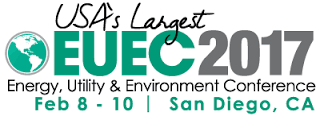 Jamie Fox, BAL Technical Sale Manager, will be attending the Energy, Utility AND Environment Conference (EUEC) February 7-10 at the San Diego Convention Center. EUEC is the largest, longest-running, professional networking and educational event in the US with a focus on the electric utility industry. If you are attending, don’t miss Jamie’s presentation on Friday, February 10, on Wastewater Selenium Chemistry in Bioreactor Treatment Systems.
Jamie Fox, BAL Technical Sale Manager, will be attending the Energy, Utility AND Environment Conference (EUEC) February 7-10 at the San Diego Convention Center. EUEC is the largest, longest-running, professional networking and educational event in the US with a focus on the electric utility industry. If you are attending, don’t miss Jamie’s presentation on Friday, February 10, on Wastewater Selenium Chemistry in Bioreactor Treatment Systems.
Contact us if you will be attending either of these meeting and you would like to meet with Elizabeth or Jamie while there!
Jan 12, 2017
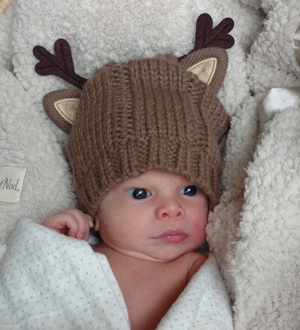
On December 2nd, BAL’s Speciation Group Leader, Jacki Aitken, gave birth to a beautiful baby boy. Silas Porter Aitken was born at 10:30 am, weighing in at just over 9 pounds! Reports are he is a calm and happy baby who already knows how to pose for a photo. Congratulations to Jacki and her husband, Keven, on the new addition to their family from all of us at Brooks Applied Labs!
Dec 14, 2016
Happy Holidays to you and yours!
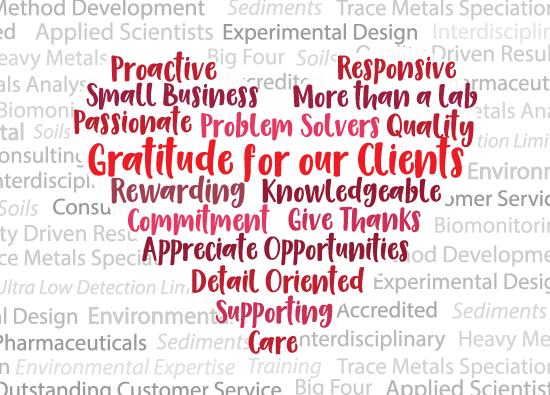 As 2016 winds down, we are filled with gratitude for our clients, and not just for the obvious reasons. You help us learn about your industries and projects, give us opportunities to use our creativity to solve problems, advocate for us as experts and for good science, and interact with us in a positive way that embraces our shared humanity. We count ourselves fortunate to work on a lot of really cool projects with some amazing people. Thank you!
As 2016 winds down, we are filled with gratitude for our clients, and not just for the obvious reasons. You help us learn about your industries and projects, give us opportunities to use our creativity to solve problems, advocate for us as experts and for good science, and interact with us in a positive way that embraces our shared humanity. We count ourselves fortunate to work on a lot of really cool projects with some amazing people. Thank you!
Warmest wishes for the holiday season from all of us at
Brooks Applied Labs
Nov 8, 2016
 Brooks Applied Labs (BAL) recently developed a new method utilizing ion chromatography coupled to an ICP-MS for the quantification of radium (226Ra). This novel analytical approach can achieve detection limits low enough to provide meaningful data for natural water samples with low background radiation levels.
Brooks Applied Labs (BAL) recently developed a new method utilizing ion chromatography coupled to an ICP-MS for the quantification of radium (226Ra). This novel analytical approach can achieve detection limits low enough to provide meaningful data for natural water samples with low background radiation levels.
226Ra is a product of the 238U decay series and is the longest-lived isotope of radium, with a half-life of 1602 years. It is one of the most toxic natural radioelements, owing to its high specific activity of 1 pCi/pg, compared with that of 238U at 3 pCi/g. Determination of trace levels of 226Ra is usually carried out by radiometric methods (alpha spectrometry, gamma-ray spectrometry, liquid scintillation counting, etc.). These methods usually require significant sample preparation before analysis, either to preconcentrate 226Ra or to remove the interfering isotopes. In addition, lower detection limits usually require very large sample volumes (> 500 mL) as well as radiometric counting times in the order of days.
Inductively coupled plasma – mass spectrometry is usually not the first choice for this application, as the concentration of Ra in most samples (< 0.740 Bq/L) is less than the detection limit of most current ICP-MS systems. The new BAL method uses ion chromatography coupled to a Nexion 350D ICP-MS to achieve a 0.009 Bq/L detection limit. This method allows common interferences such as 88Sr138Ba+, 87Sr139La+, 86Sr140Ce+, 208Pb18O+, 186W40Ar+, 209Bi16O1H+, and 88Sr138Ba+ (as well as matrix ions such as Ca and Mg) to be chromatographically separated and requires only a 5-mL sample volume. The analytical method was validated by comparing the results of natural water samples using various methods, including alpha spectrometry.
The BAL method is an excellent alternative to common radiometric methods, especially in emergency situations, as it utilizes common instrumentation and provides rapid turnaround time (as fast as 48 hours) for results with comparable or lower detection limits. BAL is a DOECAP-audited laboratory available to perform specialty trace metals analytical services at all US DOE sites and maintains a current Radioactive Materials License.
Contact us for more info!
Nov 8, 2016
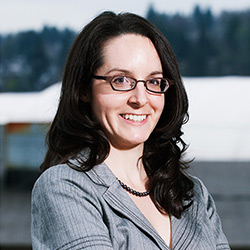 The month of November marks the 10-year work anniversary for our Client Services Manager, Tiffany Stilwater. For those clients who have been lucky enough to work with Tiffany, that means 10 years of cheery greetings, weather updates, and copious exclamation points in every email you receive from her! Tiffany started her BAL career as a Project Coordinator, then worked her way up to her current position after exceeding all expectations as a stellar Project Manager. On a daily basis, Tiffany continues to deliver an exceptional level of customer service to her many clients, and they love her for it! Please join me in congratulating Tiffany on this significant milestone. From everyone at Brooks Applied Labs, thank you for your dedication, Tiffany!!!
The month of November marks the 10-year work anniversary for our Client Services Manager, Tiffany Stilwater. For those clients who have been lucky enough to work with Tiffany, that means 10 years of cheery greetings, weather updates, and copious exclamation points in every email you receive from her! Tiffany started her BAL career as a Project Coordinator, then worked her way up to her current position after exceeding all expectations as a stellar Project Manager. On a daily basis, Tiffany continues to deliver an exceptional level of customer service to her many clients, and they love her for it! Please join me in congratulating Tiffany on this significant milestone. From everyone at Brooks Applied Labs, thank you for your dedication, Tiffany!!!
 On February 15th, BAL’s Project Manager Amanda Royal organized over 70 exhibitors for the annual Science Discovery Night at Lake Forest Park Elementary. Over 300 kids with their families attended this fantastic event to explore the wonderful world of science and to learn from exhibitors ranging from the Seattle Audubon Society to the UW Dept. of Earth and Space Sciences. With additional help from BAL’s Tiffany Stilwater and Anna Prestbo, the event received an A+ from exhibitors and families alike, sending our future generation home with the scientific tools to help them tackle the world.
On February 15th, BAL’s Project Manager Amanda Royal organized over 70 exhibitors for the annual Science Discovery Night at Lake Forest Park Elementary. Over 300 kids with their families attended this fantastic event to explore the wonderful world of science and to learn from exhibitors ranging from the Seattle Audubon Society to the UW Dept. of Earth and Space Sciences. With additional help from BAL’s Tiffany Stilwater and Anna Prestbo, the event received an A+ from exhibitors and families alike, sending our future generation home with the scientific tools to help them tackle the world.
 Brooks Applied Labs recently unveiled a new method for the quantitation of selenium in saline waters at concentrations of 5 ng/L (that converts to 0.005 µg/L!). This new capacity to support ultra-trace detection limits for elements predominately existing as anions in saline waters (such as
Brooks Applied Labs recently unveiled a new method for the quantitation of selenium in saline waters at concentrations of 5 ng/L (that converts to 0.005 µg/L!). This new capacity to support ultra-trace detection limits for elements predominately existing as anions in saline waters (such as 

 Ecotoxicity models for selenium have historically used total selenium concentrations to determine the risk to the ecosystem. However, more and more regulatory agencies are gaining an understanding of how the molecular form of selenium can impact the environment. Different molecular forms of selenium (species) will bioaccumulate (increase in tissue concentration) at different rates in lower trophic organisms, affecting the food chain at the basest level. Certain organic selenium species, such as selenomethionine, can bioaccumulate at a rate much faster than inorganic selenium species, such as selenite and selenate. To support the scientific demands of ecotoxicity models and investigations, Brooks Applied Labs has developed a new method for supporting selenium speciation analyses with a detection limit of 0.005 µg/L, which reflects applied dilutions for water samples.
Ecotoxicity models for selenium have historically used total selenium concentrations to determine the risk to the ecosystem. However, more and more regulatory agencies are gaining an understanding of how the molecular form of selenium can impact the environment. Different molecular forms of selenium (species) will bioaccumulate (increase in tissue concentration) at different rates in lower trophic organisms, affecting the food chain at the basest level. Certain organic selenium species, such as selenomethionine, can bioaccumulate at a rate much faster than inorganic selenium species, such as selenite and selenate. To support the scientific demands of ecotoxicity models and investigations, Brooks Applied Labs has developed a new method for supporting selenium speciation analyses with a detection limit of 0.005 µg/L, which reflects applied dilutions for water samples.



 As 2016 winds down, we are filled with gratitude for our clients, and not just for the obvious reasons. You help us learn about your industries and projects, give us opportunities to use our creativity to solve problems, advocate for us as experts and for good science, and interact with us in a positive way that embraces our shared humanity. We count ourselves fortunate to work on a lot of really cool projects with some amazing people. Thank you!
As 2016 winds down, we are filled with gratitude for our clients, and not just for the obvious reasons. You help us learn about your industries and projects, give us opportunities to use our creativity to solve problems, advocate for us as experts and for good science, and interact with us in a positive way that embraces our shared humanity. We count ourselves fortunate to work on a lot of really cool projects with some amazing people. Thank you! Brooks Applied Labs (BAL) recently developed a new method utilizing ion chromatography coupled to an ICP-MS for the quantification of radium (226Ra). This novel analytical approach can achieve detection limits low enough to provide meaningful data for natural water samples with low background radiation levels.
Brooks Applied Labs (BAL) recently developed a new method utilizing ion chromatography coupled to an ICP-MS for the quantification of radium (226Ra). This novel analytical approach can achieve detection limits low enough to provide meaningful data for natural water samples with low background radiation levels. The month of November marks the 10-year work anniversary for our Client Services Manager, Tiffany Stilwater. For those clients who have been lucky enough to work with Tiffany, that means 10 years of cheery greetings, weather updates, and copious exclamation points in every email you receive from her! Tiffany started her BAL career as a Project Coordinator, then worked her way up to her current position after exceeding all expectations as a stellar Project Manager. On a daily basis, Tiffany continues to deliver an exceptional level of customer service to her many clients, and they love her for it! Please join me in congratulating Tiffany on this significant milestone. From everyone at Brooks Applied Labs, thank you for your dedication, Tiffany!!!
The month of November marks the 10-year work anniversary for our Client Services Manager, Tiffany Stilwater. For those clients who have been lucky enough to work with Tiffany, that means 10 years of cheery greetings, weather updates, and copious exclamation points in every email you receive from her! Tiffany started her BAL career as a Project Coordinator, then worked her way up to her current position after exceeding all expectations as a stellar Project Manager. On a daily basis, Tiffany continues to deliver an exceptional level of customer service to her many clients, and they love her for it! Please join me in congratulating Tiffany on this significant milestone. From everyone at Brooks Applied Labs, thank you for your dedication, Tiffany!!!